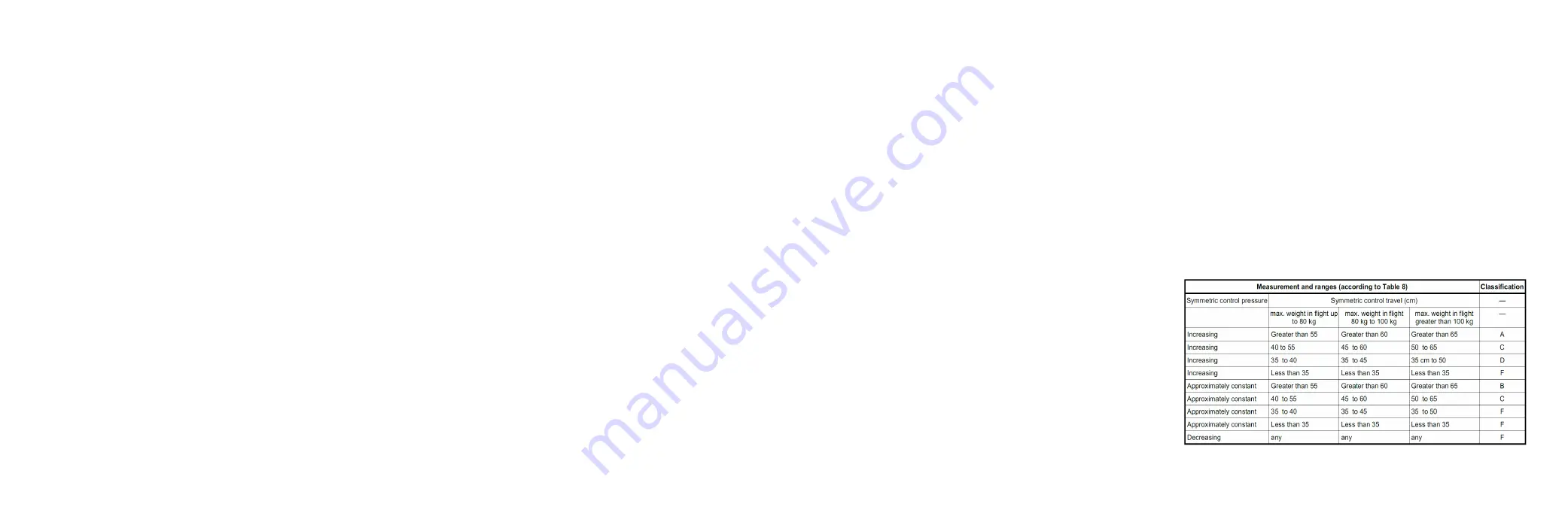
18
19
Fast descent techniques
Fast descent techniques should be familiar to any pilot, as they
are important resources to be used in certain situations. These
manoeuvres should be learned at your flying school as a part of
paragliding pilot training. Nevertheless, we recommend practicing
these manoeuvres on SIV courses under professional supervision.
Big ears
This is a safe method to moderately loose altitude while still
maintaining forward speed. To do big ears, release any brake line
loops around your wrist, set your leg on the speed bar, but do not
push it. Now pull the outer A lines (the A2 risers in the drawing)
on both sides. As long as you keep the A2 risers pulled, the wing
tips stay folded and the sink speed increases. To regain normal
flight, release the A2 risers, and if necessary apply the brakes with
short impulse movements. Release big ears at least 100 meters
above the ground. While using big ears, the wing speed decreases,
which is why we also recommend using the accelerator half way
in combination with big ears to maintain enough horisontal speed,
and to additionally increase vertical speed. Be careful not to pull
the brakes while flying with big ears! Steering is done by weight
shift only. Always do the big ears first and then accelerate; not the
other way around as you will risk getting a frontal collapse.
B line stall
While in the B-stall the glider has no horizontal speed and the
sink rate increases to about -10m/s. To enter the B-stall reach
for the B risers just above the maillons and pull both B line risers
symmetrically down for about 20 cm. To exit the manoeuvre,
simultaneously release both risers quickly. On exit the Queen 3
gently dives without deep stall tendencies.
Spiral dive
The spiral dive is the most demanding of all three manoeuvres
(Big ears, B-stall, Spiral) and should only be trained gradually and
always with plenty of altitude. The spiral dive should be practiced
and learned on a SIV course under professional supervision. To
enter the spiral, weight shift to the desired side and gradually apply
the brake on the same side. Then let the wing accelerate for two
turns and you will enter the spiral dive.
While in the spiral, you can control your descent rate and bank
angle by applying more or less inner brake. Depending on how
steep the spiral is you may need to use also outer brake. To exit
the spiral dive we recommend that the pilot is in the neutral weight
shift position. If you release the inner brake, the wing exits the
spiral dive by itself.
The Queen 3 has no tendency to become stable in the spiral until
-14m/s descent, but you should be aware of the procedure for
exiting a stable spiral.
To exit a stable spiral dive, weight shift to the opposite side of the
turn and apply the outer brake until feeling the deceleration of
the wing rotation. Then release the outer brake and let the glider
decelerate for the next couple of turns. To avoid a big pendulum
movement after exiting the spiral, apply a short brake input on the
inner side before the glider exits the spiral.
Warnings (Spiral dive):
• There is a possibility of losing consciousness while in the spiral
dive. Never make a spiral with more than 16-18m/s descent
speed.
• In fast spirals it may be necessary to apply the outer brake to
begin exiting the spiral dive.
• If practicing the spiral dive low, a pilot may not have enough
altitude or time to safely exit this manoeuvre.
Winch launch
The Queen 3 is easy to tow-launch using a winch and has no
special characteristics to consider during this form of launching.
To practice this launching technique special training is needed
and you have to
be aware of the procedures and dangers, which are specific for
towing. We do not recommend using any special towing device
which accelerates the glider during the winch launch.
Aerobatics
The Queen 3 was not designed for aerobatics, therefore, these
may not be performed on this glider. In addition to this, any extreme
manoeuvres place unnecessary stress on the glider and shorten
its lifespan.
Primary controls failure
If for any reason you cannot use the brake lines, you have to pilot
the wing to the landing place by using weight shift. Weight shift
should be enough to safely land the glider. You can also use the C
risers to control and steer the wing. Be careful not to over-handle
the glider by using the C riser technique when steering. By pulling
the C risers too strong you can cause a stall or a negative spin.
Land your glider at trim speed without using the C risers,
to avoid over-handling the glider low above ground. We
recommend using weight shift.
Flying in rain
If you are accidently caught-out in a rain shower, it is best
to land immediately. If your wing becomes wet in the air it is
advised to maintain accelerated flight using the speed bar and/
or releasing the trimmers, even during the final approach. DO
NOT use big ears as a descent technique, big ears increases
drag, and with a wet wing this will further increase the chances
of a parachutal stall occurring. Instead, lose height with gentle
360’s and maintain your air speed at all times. If your wing
enters parachutal stall when wet, immediately release the
trimmers and accelerate the wing to regain airspeed.
Содержание Queen 3
Страница 1: ......
Страница 2: ...i n t r o d u c e d 386 8 200 43 52 www 777gliders com info 777gliders com Triple Seven 6 6 2022...
Страница 4: ...7 7 6...
Страница 18: ......

































